PROM NIGHT (1980)
At a high school senior prom, a masked killer stalks four teenagers who were responsible for the accidental death of a classmate six years previously.
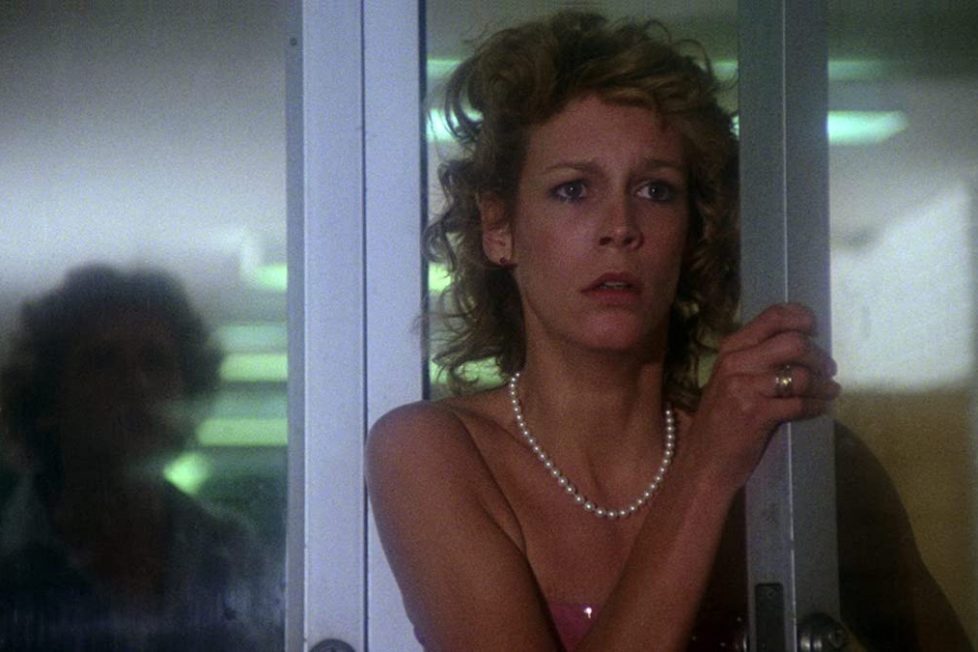
At a high school senior prom, a masked killer stalks four teenagers who were responsible for the accidental death of a classmate six years previously.


Did you watch Halloween (1978) and think Jamie Lee Curtis was a little static in her role? That it could only be improved by a disco-dancing routine as Michael Myers goes about his killing? Then you’re in luck because Prom Night delivers exactly that! This 1980 Canadian horror arrived early in the slasher boom and is a valuable entry for genre connoisseurs, but unlike Halloween or Friday the 13th (1980), Prom Night treads water.
Fresh off the success of Halloween, Jamie Lee Curtis finds herself battling another serial killer as Kim Hammond, a high school girl preparing for her Prom Night with her friends. However, six years ago her clique accidentally killed Kim’s younger sister and swore a pact of silence together, which is now threatened by someone who knows their secret.
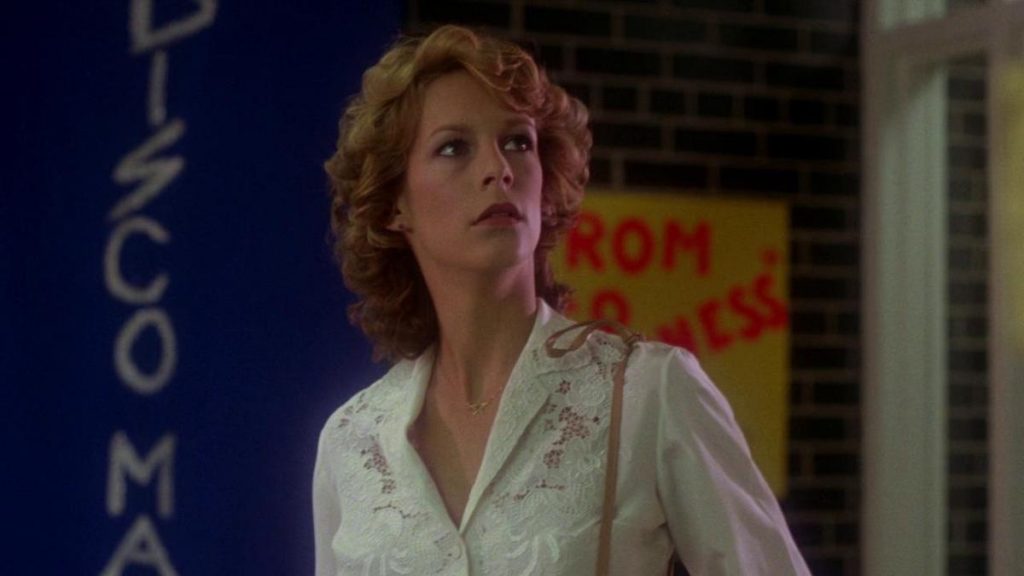
This opening sequence reflects the lack of fanfare this movie received outside of the horror community. Children chanting “killers are coming” is a little spooky but it lacks the directorial bite others brought to the table. John Carpenter’s Halloween, Sean C. Cunningham’s Friday the 13th, and Tobe Hooper’s The Texas Chain Saw Massacre (1974) strapped us down with commanding tones, but here I’m left wondering what this has to do with a Prom Night. The imagery of a dead little girl smashed against a mirror is certainly memorable but it sets an intensity never matched.
Tobe Hooper captured carnage as cinema verité and John Carpenter induced dread with a Steadicam, but Prom Night’s Paul Lynch relies on a simpler approach without Friday the 13th‘s saving grace of having Tom Savini’s impeccable gore to fall back on. The stark linearity of the first act is all too apparent, as the various teenaged characters say good morning to their parents, receive ominous calls from the killer, and then arrive at school. Subsequent slashers like I Know What You Did Last Summer (1997) knew to avoid the repetition with a simple line reading of “oh, you got a threatening call, too?”
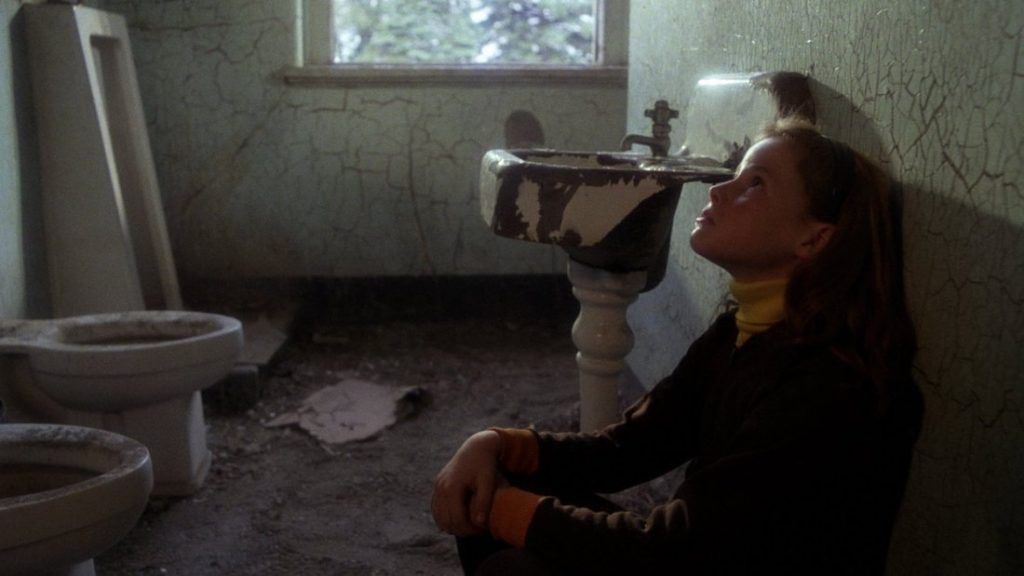
Also introduced are familiar tropes: the newly hired “wacko” groundskeeper who stares at Curtis through thick-rimmed glasses fixed with tape (at least Crazy Ralph had something to say), and the Black Christmas (1974) phone calls which this killer seems in a hurry to get through as he crosses off his victim list. There’s creative crossover in all these horrors at the time but disappointingly nothing is paid off here.
It’s no surprise that Lynch initially met with Halloween producer Irwin Yablans to pitch the (unmade) horror Don’t Go See the Doctor and was advised that holidays sell big in the genre. Prom isn’t a holiday so already we’re slightly off track, but he met with writer Robert Guza Jr. (Curtains) about his story of teens being haunted by a tragic mistake and the two built something around the Prom Night premise. Like Victor Miller before Friday the 13th, Guza was a former head writer for TV’s General Hospital and had credits in soaps like Loving, Melrose Place, and Models Inc. It’s ironic that the groundwork of youth-oriented horror was afternoon soaps while earning the reputation of being lifeless meat fodder.
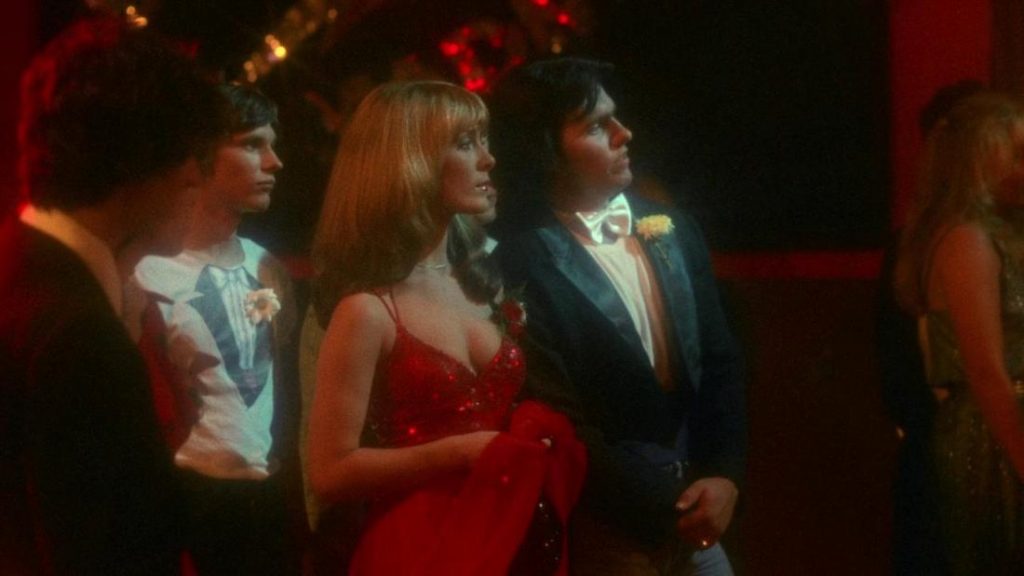
Even with Yablans’ involvement, they struggled to get financing until Jamie Lee Curtis signed on, and yet she still had to be auditioned because the producer was smitten by the idea of The Brady Bunch’s Eve Plumb as the lead. I was puzzled Curtis fought so hard for a role not dissimilar to her Halloween breakthrough, but then I learnt she was paid $30,000 compared to the lean $8,000 for Carpenter’s classic. Even her Halloween co-star Donald Pleasance had only received $20,000, so Curtis recognised how profitable the horror genre could be for her. Prom Night was one of three genre pictures she made that year, alongside The Fog and Terror Train.
The rest of the cast is decent enough. Casey Stevens plays a well-meaning boyfriend awkwardly trying to tell his girlfriend he may have killed her little sister; David Mucci and Eddie Benton try not to rip-off John Travolta and Nancy Allen in their identical bullying roles from Carrie (1976); while Michael Tough plays Curtis’s flighty brother who’s conspicuously missing for most of the runtime. Tough has since reminisced about Curtis going above and beyond for their dynamic on camera, inviting him out to the mall and insisting on calling him “baby brother”. Leslie Nielsen made up for his lack of screentime as Curtis’s screen father, in a way, as everyone on set has an anecdote about his infamous fart-sound machine. He even took some of them to dinner with Christopher Plummer, who incredulously asked of Nielsen: “he really has a problem, doesn’t he?”
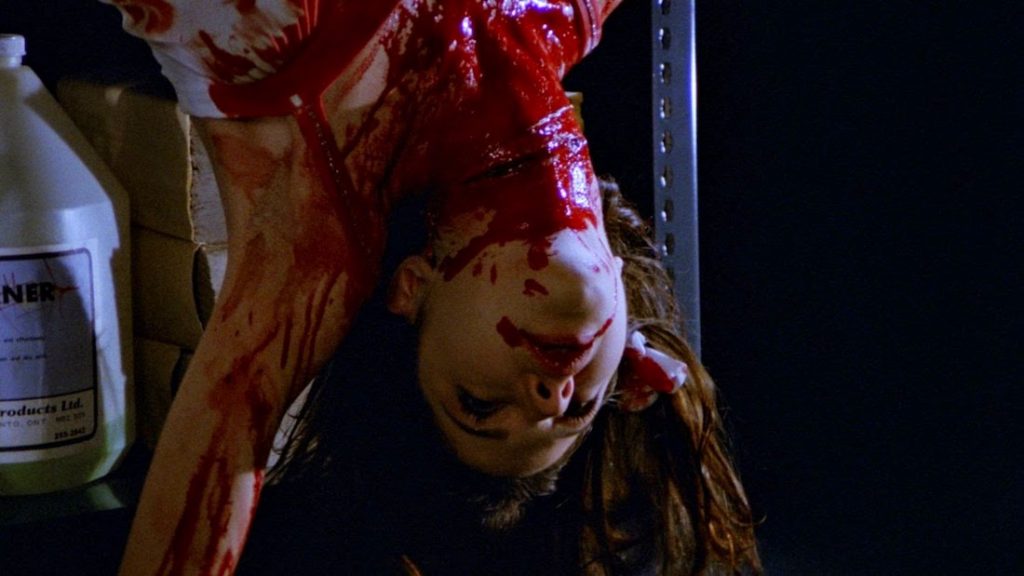
Now it seems unfair to criticise a movie via retroactive comparisons but Prom Night does feel stuck between the iconic movie monsters of Halloween and the genuine teen mystery of Scream (1996). Director Wes Craven and writer Kevin Williamson are well praised for elevating the slasher by recognising the ‘everyone’s a suspect’ aspect could bring an engaging whodunnit to the sub-genre.
Prom Night is marred in following the formula of a Dr Loomis-type chasing after the scarred maniac who took the blame for the prologue death. The guilt-ridden boyfriend is a suspect, the aggressive bully and spiteful ex-girlfriend are devious, but this red herring simply doesn’t work when one realises he has no idea who the targets would be! He’s out for revenge but we know from the opening he wasn’t even there and it couldn’t possibly be him, so this mystery is only slightly more guessable than Friday the 13th.
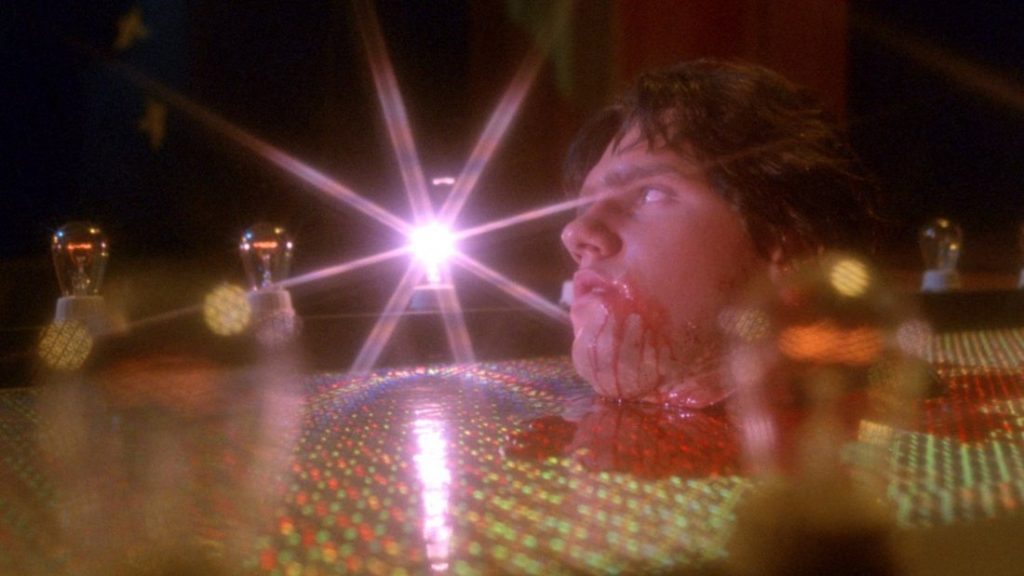
Lynch eschewed gory violence in an attempt to build more suspense, which this is where I feel it fails. The title promises a Prom Night to remember but the first two acts are ineffective build-up. The finale is decent enough, however; a messy fight-scene mid van chase that ends in a fiery explosion is fun, and the pièce de résistance is clearly a discotheque decapitation. The best instance of horror is the extended chase through school corridors where nobody can hear screaming during a loud disco. But when the resident mean girl finds her third hiding spot you realise she’s getting far more screentime than the actual heroine of the story, Jamie Lee Curtis, who only gets a spare couple of minutes to wrap things up!
Despite these criticisms and the few production setbacks (like avoiding a $10M lawsuit because their “original” disco tracks deliberately copied mainstream songs), the $1.5M-budgeted Prom Night proved successful by grossing $15M at the box office. It was almost distributed by Paramount Pictures who instead backed Friday the 13th, that premiered two months before this. Whether or not such healthy competition helped, only one of those slashers became a long-running franchise, whereas Hello Mary Lou: Prom Night II (1987) took seven years to arrive and had little in common with the original beyond the high school setting. Two further sequels, Prom Night: The Last Kiss (1989) and Prom Night IV: Deliver Us From Evil (1992), plus a 2008 remake, would round off this odd series.
Prom Night may have helped provide the foundations of the 1980’s’ slasher craze, but there’s little value worth taking home after Prom.
USA | 1980 | 92 MINUTES | 1.85:1 | COLOUR | ENGLISH

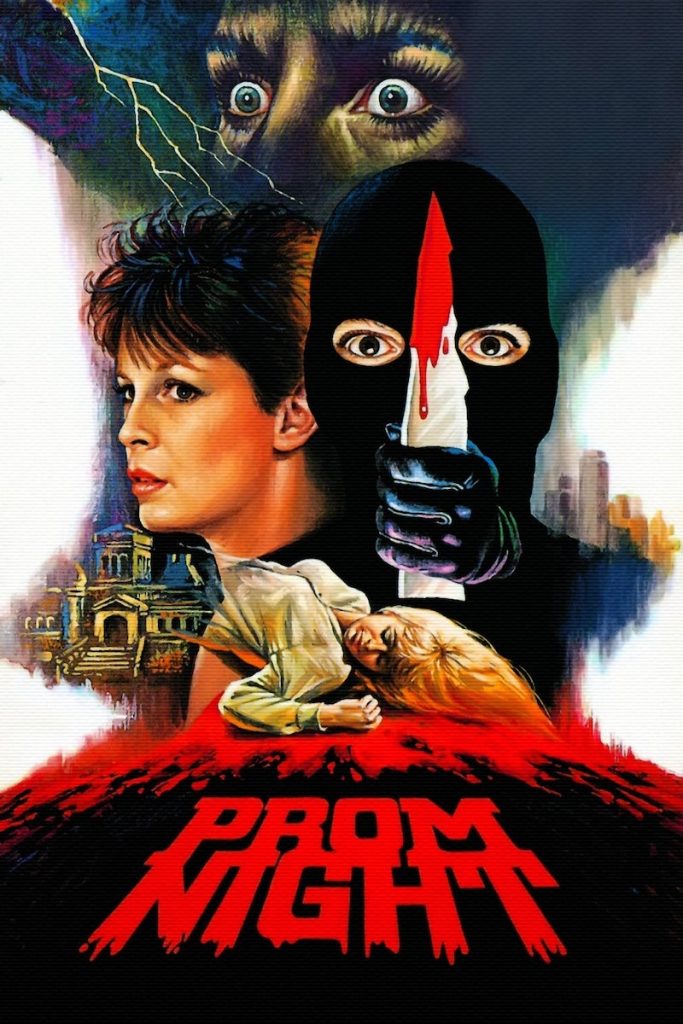
director: Paul Lynch.
writer: William Gray.
starring: Jamie Lee Curtis, Leslie Nielsen, Casey Stevens, Eddie Benton, Michael Tough, Robert A. Silverman, Mary Beth Rubens & Pita Oliver.
1 Comments
This site uses Akismet to reduce spam. Learn how your comment data is processed.

I have one thing to nit pick about this review – in the boyfriend not knowing WHO the suspects would be. It COULD have been him, at the beginning we KNOW someone else was there that day or saw what happened so YES, it could have been him. This movie is kind of a let down in the end but other still enjoyable with pretty decent acting. I think it’s biggest mistake other than some extra gore is the removal of a few scenes shown on network tv (like nielsen chopping wood and how seriously affected the mother is by this anniversary of Robin’s death), jamie lee’s lack of peril (although considering the outcome it actually makes sense) and neilsen’s sudden disappearance (where the HELL did he go for the last 30 mins?). That last one really bugged me. The father and mother who COULD be the killer have 2 quick scenes that added to them possibly being the killer removed and then at the dance they both disappear. I guess it’s to make it look like it could be them but then even at the end once the killer is revealed (also when the final mayhem coronation takes place) their STILL nowhere to be found. The gore I GET but the other thing is just bad editing/directing.